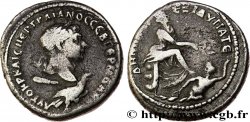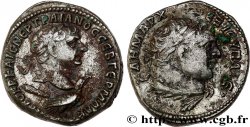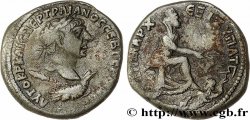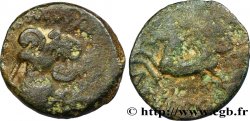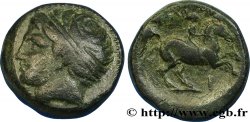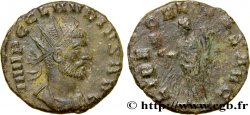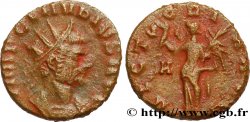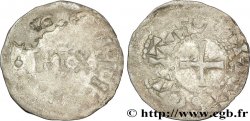You must signin and be an approved bidder to bid, LOGIN TO BID. Accounts are subject to approval and the approval process takes place within 48 hours. Do not wait until the day a sale closes to register. Clicking on « bid » constitutes acceptance of the terms of use of cgb.fr private e-auctions.
Bids must be placed in whole Euro amounts only. The sale will start closing at the time stated on the item description; any bids received at the site after the closing time will not be executed. Transmission times may vary and bids could be rejected if you wait until the last second. For further information ckeck the E-auctions F.A.Q.
NO BUYER'S FEE.
NO BUYER'S FEE.
| Estimate : | 95 € |
| Price : | 58 € |
| Maximum bid : | 65 € |
| End of the sale : | 04 April 2016 14:26:30 |
| bidders : | 7 bidders |
Type : Denier
Date: 102
Mint name / Town : Roma
Metal : silver
Millesimal fineness : 900 ‰
Diameter : 17,5 mm
Orientation dies : 6 h.
Weight : 3,14 g.
Rarity : R1
Officine: 6e
Coments on the condition:
Exemplaire sur un petit flan ovale, bien centré. Beau buste de Trajan. Frappe un peu molle au revers. Jolie patine gris foncé avec des reflets dorés
Catalogue references :
Obverse
Obverse legend : IMP CAES NERVA TRA-IAN AVG GERM.
Obverse description : Buste lauré de Trajan à droite, avec pan de paludamentum sur l’épaule gauche (O*2).
Obverse translation : “Imperator Cæsar Nerva Traianus Augustus Germanicus”, (L’empereur césar Nerva Trajan auguste germanique).
Reverse
Reverse legend : P. M. TR. P. COS. IIII. P. P..
Reverse description : Victoria (La Victoire) debout de face tournée à gauche, tenant une couronne de la main droite et une palme de la main gauche.
Reverse translation : “Pontifex Maximus Tribunicia Potestas Consul quartum Pater Patriæ”, (Grand pontife revêtu de la puissance tribunitienne consul pour la quatrième fois père de la patrie).
Commentary
Rubans de type 3. Type avec le pan de paludamentum plutôt que l’égide sur l’épaule (cf. BN/R4., n° 110, pl. 7 et n° 117 ou 120, pl 7). Sur cet exemplaire, le pan de paludamentum est bien visible.







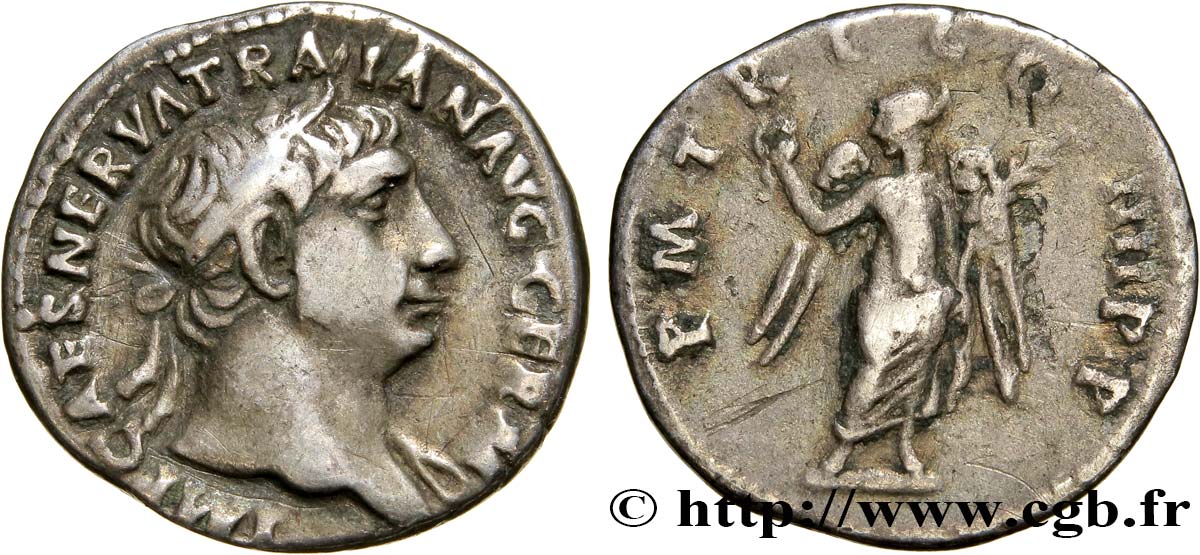
 Report a mistake
Report a mistake Print the page
Print the page Share my selection
Share my selection Ask a question
Ask a question Consign / sell
Consign / sell
 Full data
Full data